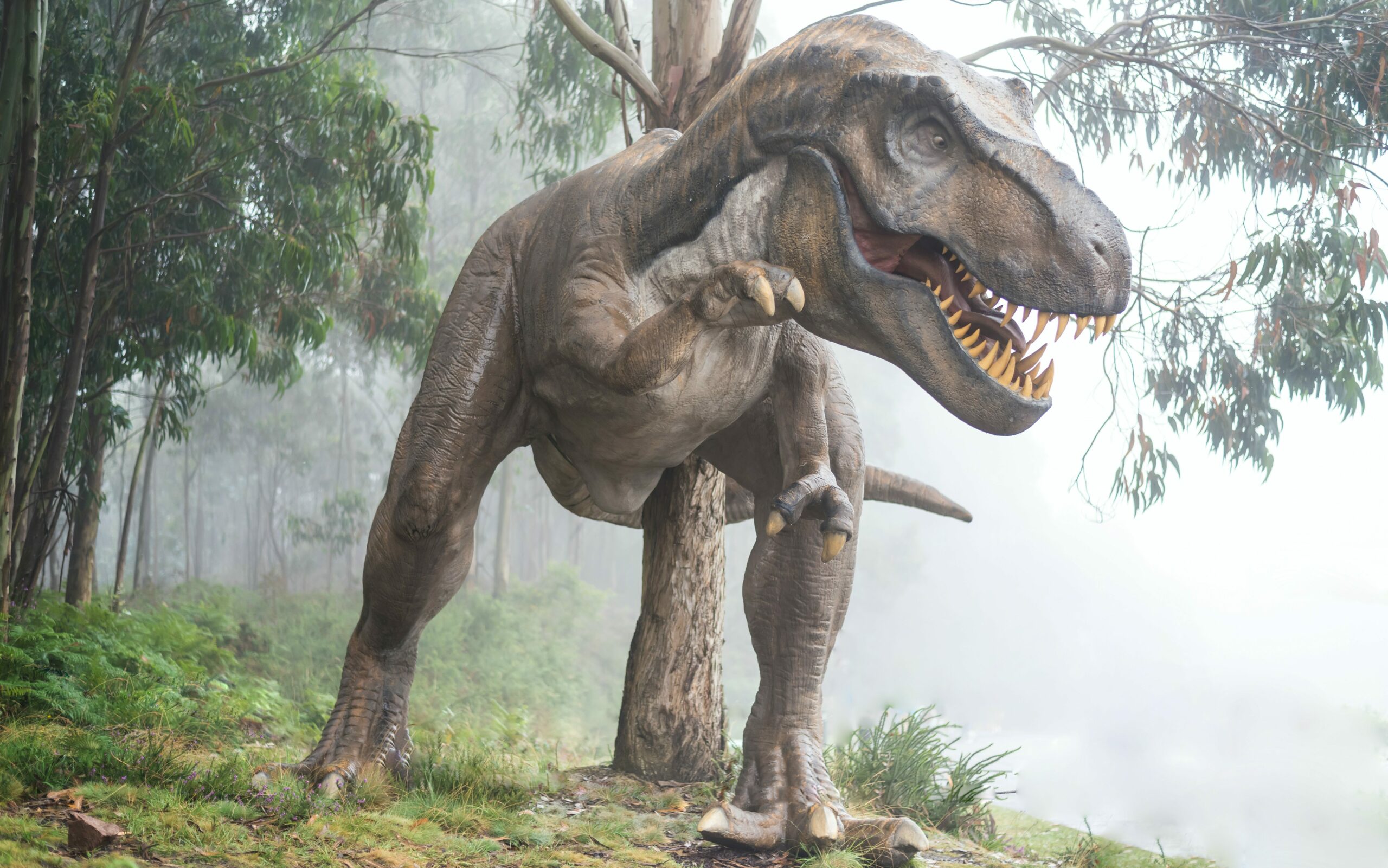The Tyrannosaurus rex, often abbreviated as T. rex, was a species of dinosaur that lived during the Late Cretaceous period, approximately 68 to 66 million years ago. Determining the exact lifespan of T. rex is a challenging task for scientists, as it involves various factors such as growth rate, reproductive age, and natural causes of death, which can be difficult to ascertain from the fossil record. However, based on current scientific knowledge and research, we can make some informed estimates about the lifespan of T. rex.

To understand the lifespan of T. rex, scientists rely on various lines of evidence, including the study of fossils, growth rates, and comparisons with modern-day animals. One important clue comes from the study of the growth patterns preserved in the fossilized bones of T. rex. By examining the microscopic structures of their bones, scientists can estimate the age of individual dinosaurs and determine how fast they grew.
Research suggests that T. rex grew rapidly during its early years, similar to modern-day birds and mammals. Some studies have estimated that T. rex reached sexual maturity at around 15 to 20 years of age, with the growth rate slowing down significantly after that. Once T. rex reached adult size, its growth rate likely slowed down, and it would have spent the majority of its life as a fully grown adult dinosaur.
Based on studies of modern-day animals and comparisons with other dinosaur species, the lifespan of T. rex is estimated to be around 20 to 30 years. This estimate is supported by the analysis of fossilized bone samples, which show signs of maturity in T. rex individuals that are estimated to be around 20 years old. However, it’s important to note that this estimate can vary depending on factors such as environmental conditions, diet, and overall health of the dinosaur population.
Like all living organisms, T. rex would have faced various challenges and risks throughout its lifespan that could have affected its survival. These could include predation, diseases, injuries, and environmental changes. T. rex was a top predator during its time, and it likely faced competition from other large carnivorous dinosaurs. Injuries sustained during hunting or territorial disputes could have been fatal, and diseases could have also impacted the health and lifespan of T. rex individuals.
Additionally, environmental changes such as climate fluctuations and shifts in food availability could have influenced the lifespan of T. rex. During the Late Cretaceous period, the climate was warm and humid, with lush forests and abundant vegetation, providing a suitable habitat for dinosaurs. However, towards the end of the Cretaceous period, there were significant changes in the global climate, including a decline in sea levels and changes in vegetation. These environmental changes could have impacted the availability of food and water, and subsequently, the lifespan of T. rex.
Another important factor that could have influenced the lifespan of T. rex is reproduction. Like modern-day reptiles, T. rex likely laid eggs and had a relatively long incubation period. After hatching, juvenile T. rex would have required parental care and protection until they were able to fend for themselves. The mortality rate of T. rex juveniles would have been relatively high due to predation, disease, and other environmental factors. However, once they reached adulthood, T. rex individuals would have been well-equipped to survive and thrive as apex predators.
In conclusion, the exact lifespan of T. rex is difficult to determine with certainty, but current scientific estimates based on fossil evidence and comparisons with modern-day animals suggest that it was likely around 20 to 30 years. T. rex likely grew rapidly during its early years, reaching sexual maturity at around 15 to 20 years of age, and then spent the majority of its life as a fully grown adult dinosaur. Like all living organisms.